Pouring Concrete Column Foundations

After pounding boulders into the bases of the holes, leveling the box forms and positioning the rebar cages, we started pouring concrete; lots of it. We decided to go with a weaker mix of 1:3:6 (cement:sand:gravel) for the concrete in the box form, because we’re looking for weight rather than strength and we don’t want to use more cement than necessary. For the circular pedestal on top we used a stronger mix of 1:2:3. You can also see in the photos two flat iron tabs, these will be bolted to the columns to add some lateral strength. Although most of the strength will come from the structure above, these will help reduce problems during construction.
The final job was to keep the whole thing wet, spraying them down every hours or so in order to cure the concrete. The circular pedestal form we used was made from an old tire, which left an indented moat around the top of the pedestal, this was a happy accident as it kept the concrete wet lot longer and helped cure the concrete.
2 Comments
Leave a Comment
© 2025 Another Bag in the Wall | Theme by Eleven Themes

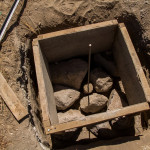
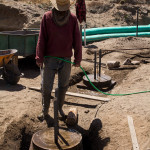
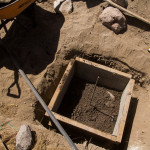
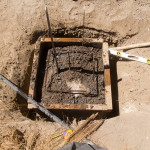
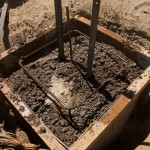
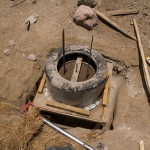
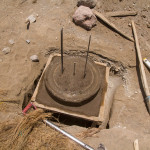
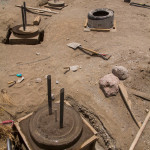


I never would have thought to use an old tire as a mold for a column. However, if it works it works, especially since it helped cure the concrete. I am a little confused about why you needed to keep the concrete wet longer. Does it help make the concrete stronger?
Yeah it kind of worked, cardboard tubes would have been easier but they wouldn’t have been free! I’m no expert so i wont try to sound like one, but from what I’ve read the longer you keep it wet the harder it gets. 3 days is ideal, but it reaches max strength after 28 days. Something to do with crystals forming in the presence of water.